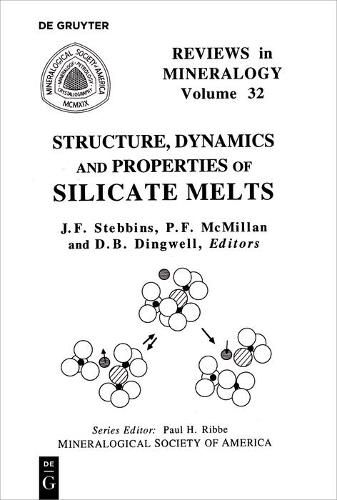Readings Newsletter
Become a Readings Member to make your shopping experience even easier.
Sign in or sign up for free!
You’re not far away from qualifying for FREE standard shipping within Australia
You’ve qualified for FREE standard shipping within Australia
The cart is loading…






This title is printed to order. This book may have been self-published. If so, we cannot guarantee the quality of the content. In the main most books will have gone through the editing process however some may not. We therefore suggest that you be aware of this before ordering this book. If in doubt check either the author or publisher’s details as we are unable to accept any returns unless they are faulty. Please contact us if you have any questions.
Volume 32 of Reviews in Mineralogy introduces the basic concepts of melt physics and relaxation theory as applied to silicate melts, then to describe the current state of experimental and computer simulation techniques for exploring the detailed atomic structure and dynamic processes which occur at high temperature, and finally to consider the relationships between melt structure, thermodynamic properties and rheology within these liquids. These fundamental relations serve to bridge the extrapolation from often highly simplified melt compositions studied in the laboratory to the multicomponent systems found in nature. This volume focuses on the properties of simple model silicate systems, which are usually volatile-free. The behavior of natural magmas has been summarized in a previous Short Course volume (Nicholls and Russell, editors, 1990: Reviews in Mineralogy, Vol. 24), and the effect of volatiles on magmatic properties in yet another (Carroll and Holloway, editors, 1994: Vol. 30).
The Mineralogical Society of America sponsored a short course for which this was the text at Stanford University December 9 and 10, 1995, preceding the Fall Meeting of the American Geophysical Union and MSA in San Fransisco, with about 100 professionals and graduate students in attendance.
$9.00 standard shipping within Australia
FREE standard shipping within Australia for orders over $100.00
Express & International shipping calculated at checkout
This title is printed to order. This book may have been self-published. If so, we cannot guarantee the quality of the content. In the main most books will have gone through the editing process however some may not. We therefore suggest that you be aware of this before ordering this book. If in doubt check either the author or publisher’s details as we are unable to accept any returns unless they are faulty. Please contact us if you have any questions.
Volume 32 of Reviews in Mineralogy introduces the basic concepts of melt physics and relaxation theory as applied to silicate melts, then to describe the current state of experimental and computer simulation techniques for exploring the detailed atomic structure and dynamic processes which occur at high temperature, and finally to consider the relationships between melt structure, thermodynamic properties and rheology within these liquids. These fundamental relations serve to bridge the extrapolation from often highly simplified melt compositions studied in the laboratory to the multicomponent systems found in nature. This volume focuses on the properties of simple model silicate systems, which are usually volatile-free. The behavior of natural magmas has been summarized in a previous Short Course volume (Nicholls and Russell, editors, 1990: Reviews in Mineralogy, Vol. 24), and the effect of volatiles on magmatic properties in yet another (Carroll and Holloway, editors, 1994: Vol. 30).
The Mineralogical Society of America sponsored a short course for which this was the text at Stanford University December 9 and 10, 1995, preceding the Fall Meeting of the American Geophysical Union and MSA in San Fransisco, with about 100 professionals and graduate students in attendance.